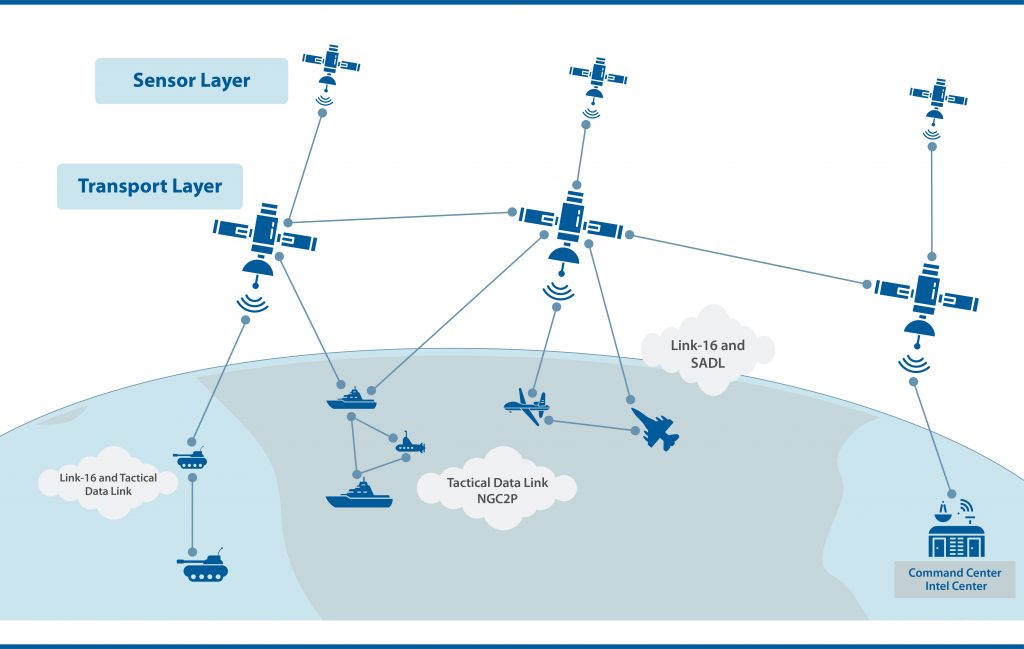Adjusting to New Realities
The United States retains an unrivaled military advantage in technology, training, and experience relative to any other nation worldwide. However, advances by other nations challenge the U.S. military to stay on the leading edge of transforming its strategy, technological innovation, and warfighting concepts to preserve future advantages in all warfighting domains. This challenge is compounded by the reality that America’s adversaries have carefully studied its strategies, operational concepts, and technologies over the preceding three decades, notably with Operation Desert Storm, in Kosovo and Operating Enduring Freedom. Studying the U.S. military’s ability to rapidly deploy and sustain forces and conduct precision strikes, the modernization pathways of other nations have been molded by lessons learned to counteract the ability of the U.S. military to achieve the same effects in the same ways. In future peer conflict scenarios, the structure of air power components will be stressed as fighter and bomber aircraft may have high sortie generation rates and long transit times from distant operating bases to warfighting theatres. Consider the example of B-52s flying from Anderson AFB in Guam during the Vietnam War, which featured roundtrip flights lasting 12 to 14 hours (Correll, 2009).
Without exquisite and timely off-board intelligence feeds, long-duration transit times will render strikes from airborne strike platforms redundant against time-sensitive targets. Increasingly, the U.S. and its allies will face adversaries that bring integrated capabilities of their own to the fight, designed to deny freedom of maneuver and undermine centers of gravity—especially command and control (C2). The U.S. defense enterprise must adjust to the new battlespace realities to secure and maintain information and decision superiority, which is vital to prevailing against its adversaries. Aware of these compounding challenges and the pressing need to evolve current C2 systems and processes, the United States Department of Defense (DOD) is pursuing next-generation C2 concepts and technologies via the JADC2 construct. In coordination with the Joint Staff and the Office of the Secretary of Defense, each U.S. military service seeks to create an information and decision superiority advantage: While the various pathways may differ, all U.S. military services agree on the fundamental objective.
Information at the Speed of Need
As United States Deputy Secretary of Defense Kathleen Hicks has noted, “Command and Control in an increasingly information-focused warfighting environment has never been more critical” (Hadley, 2022). Realizing the importance of securing information and decision advantage, the DOD has formulated the JADC2 construct, which envisions an enterprise in which data is collected from a broad array of multi-domain sensors, rapidly transmitted across vast distances, processed into actionable information and provided to consumers on a demand-relevant basis to empower smart decision-making across the tactical, operational, and strategic command realms (DOD, 2022). JADC2 is not a singular program or capability, it involves using a mix of capabilities to get relevant information to each warfighter at the right time to achieve the desired effects, all at a global scale. The DoD describes these functions in its March 2022 Summary of the Joint All-Domain Command & Control Strategy (DOD, 2022):
“JADC2 provides a coherent approach for shaping future Joint Force C2 capabilities and is intended to produce the warfighting capability to sense, make sense, and act at all levels and phases of war, across all domains, and with partners, to deliver information advantage at the speed of relevance.”
Anyone questioning the necessity of JADC2 can reflect on the Battle of Britain in the summer of 1940. It is a classic example of how information and decision superiority can be the deciding factor in conflict. Having just occupied France, Germany was set on invading the United Kingdom, and an air offensive was the first component of achieving that goal. Royal Air Force (RAF) combat aircraft were outnumbered by more than seven-to-one. When the Luftwaffe raids commenced, over 3,500 German combat aircraft were massed across the English Channel. By comparison, the RAF possessed only 446 operational fighters. In the ten days between August 8 and August 18, 1940, the RAF lost 154 pilots, with only 63 green airmen available from training squadrons to backfill casualties (Richards, 1953). Yet British forces prevailed against these overwhelming odds because their information and decision superiority enabled them to direct their Hurricane and Spitfire fighter aircraft more effectively and efficiently against the more numerous Luftwaffe. The RAF was able to posture fighter aircraft at the right time and place to defend the homeland while avoiding zones of undue risk. Though the technology, systems, and processes have changed since the Battle of Britain, information and decision superiority remain vital military attributes, especially when facing a peer threat—precisely the circumstances facing the U.S. military.

Given this objective, several fundamental principles will be crucial for JADC2 architects to follow. JADC2 is only as effective as the data empowering it. Data inputs are the backbone of information and decision superiority. Sensors must be positioned at the right time and place to secure necessary insights regarding adversary activities, force composition, and points of vulnerability. Data is also essential when seeking to command and control U.S. and allied forces, secure critical infrastructure, and track incoming threats. The scale and scope of future battlespaces demand a new generation of sensors to gather the data necessary to empower smart decision-making, including systems that can penetrate, see, or sense deep behind enemy lines and provide persistent observation.
JADC2 must also move information at the speed of need. Mobility and speed have always been imperatives in warfare, but the focus has historically been on how operators or platforms could leverage these advantages physically. In the information age, military operations increasingly depend on the abilities of sensors, data processing power, and human actors in the decision sphere to understand the battlespace. This includes finding and fixing targets to secure desired effects while reducing vulnerability (Deptula, 2016). The crux of the modern era of warfare is that the tools of the industrial age still matter—the aircraft, ships, tanks, satellites, and fielded forces—but information superiority is of equal or greater importance. Military forces need to be directed to execute operations at the best time and place to maximize force efficiency while avoiding undue risk. To do so, the warfighting enterprise needs situational awareness and connectivity that is fit for this purpose in the future.
Space Contributions to JADC2
The space domain will determine the outcome of future conflicts. The reason is simple: success in war will go to the side that possesses superior battlespace knowledge, makes better decisions, directs forces more effectively, and closes kill chains faster. Space-based technologies will prove essential in manifesting the vision for JADC2. On-orbit technologies are pivotal in securing an operational advantage, especially when it comes to sensors and connectivity: space is the ultimate high ground, affording an extremely broad view for sensor data collection. The vantage from space also enables connectivity between forces separated by tremendous distances and provides global communication links that can move data from all sensors. United States Space Force leaders understand the imperative and the centrality of space capabilities to JADC2. As the first United States Chief of Space Operations, General Jay Raymond, explained, “our ability to sense from the space domain, transport and make sense of data, and then get that data into the hands of our joint warfighting partners on land, in the air, and at sea, is what the Space Force delivers to JADC2. Space capabilities underpin modern warfare” (USAF, 2022).
The U.S. Space Force’s doctrine notes, “One key distinction of warfare in the Information Age is that many weapon systems rely on external sources of information to function” (U.S. Space Force, 2020). While there is no question that space capabilities will be critical to realizing JADC2, the specific systems and capabilities needed, how many, and at what cost remain undefined. The lack of clarity on the ultimate scale and scope of JADC2 has not helped future planning. Many requisite technologies are already available while others remain on the drawing board, but there is no clear path for procuring and fielding the required capabilities. Overarching operational concepts and strategies directing their use must also be defined, especially those related to on-orbit JADC2 functions. Sensors, processing power, and C2, all linked by robust connectivity, are the keystone elements comprising the vision for JADC2. The space domain affords distinct advantages in all these areas, and the effects delivered through space will be crucial in delivering the intended goals of JADC2.
The lack of clarity on the ultimate scale and scope of JADC2 has not helped future planning. Many requisite technologies are already available while others remain on the drawing board, but there is no clear path for procuring and fielding the required capabilities.
– Tim Ryan
Sensing
Data collection is a critical component of the JADC2 effort and stresses the imperative of placing sensors in the right place and time to gather the desired inputs across the battlespace—from friendly lines to deep over adversary territory. In the past, these data collection functions were executed mainly from the air domain, allowing the ability to rapidly span large swaths of territory and observe areas of interest with the advantage of altitude. Today’s air domain is not only highly contested over enemy peripheries, but airborne intelligence, surveillance, and reconnaissance (ISR) must also transit extremely long distances from U.S. and allied bases of operation to effectively reach the front line, much less behind enemy lines. While the air domain will remain necessary for such missions, ISR will increasingly transition to space. The ability to cover vast portions of the earth with rapid refresh rates and constant coverage, all while avoiding traditional air defenses and without having to sustain large rotations of mission aircraft to net the desired result, is a game-changing advantage afforded by on-orbit systems.
Space Transport Layer
Space-based sensors will yield crucial inputs, but sensors located in the air, on land, or at sea will also prove equally valuable. A critical operational advantage to unlock is fusing inputs from all sources into a highly dynamic, effects-oriented fashion to achieve mission results. Space sensors, whether moving target identification or other types, will be designed as nodes in a broader multi-domain sensor network, able to gather disparate flows of data and fuse them into an aggregated whole to reveal more actionable knowledge of the battlespace than can be provided by any individual source. Sensors in space and other JADC2 nodes offer significant potential, but the entire enterprise must be connected to deliver the desired results. While a range of terrestrial networks in the form of various datalinks will remain important, a new overarching global communication backbone is required to fully connect all the various elements of the JADC2 enterprise in a dependable, high-speed, seamless, resilient fashion. That requirement can be met best through space-based capabilities due to their global perspective, persistence, and information connectivity. Expanding, operating, and managing the global JADC2 space transport layer and associated infrastructure will be a critical mission for the U.S. Space Force over the next few years.

Expanding Space Capabilities
Manifesting the vision for JADC2 through exploiting space requires the national security community, particularly the Space Force, to develop a new suite of sensor capabilities and a robust space transport data transmission layer scaled for global operations (DOD, 2022). While JADC2 will be the operational commander’s pathway for creating effects in the air and on the ground, its orbital assets must be resilient and defended. These dynamics reflect a significant paradigm shift in how the U.S. national security establishment views space. A better set of capabilities begins with a distributed, resilient architecture involving far more satellites than are currently in orbit. To increase levels of resilience, responsiveness, and functionality, the JADC2 space transport layer will need a combination of government and commercial space systems distributed over many orbital regimes to make up the sheer quantity required. Over time, the transport layer will evolve and expand, exploiting different link technologies, satellites and orbits. Said more simply, a far more numerous, distributed set of satellites is required to empower the JADC2 transport layer in a way that helps avoid single points of failure and which will bring more modern capabilities to orbit.
To increase levels of resilience, responsiveness, and functionality, the JADC2 space transport layer will need a combination of government and commercial space systems distributed over many orbital regimes to make up the sheer quantity required. Over time, the transport layer will evolve and expand, exploiting different link technologies, satellites and orbits.
– Tim Ryan
In the next step for JADC2, the Space Development Agency (SDA) will launch a constellation of Low-Earth Orbit (LEO) satellites integrating the services’ tactical networks to create the transport layer of a mesh network. The SDA views the transport layer as primarily an integration challenge where multiple service efforts must be brought into a cohesive system of systems. As such, the SDA is working with individual services on specific integration requirements. The U.S. Space Force, which designs the JADC2 space transport layer, will need to employ wide-band array capabilities that enable the ability to send and receive data from satellites on multiple frequencies in multiple orbits. The resulting model will perform much like a modern cellphone, which can rely upon multiple proprietary networks in a way that appears seamless to the user and provides an encompassing range of services. U.S. Space Force leaders fully understand the importance of on-orbit communication capabilities in realizing the JADC2 vision. As Vice Chief of Space Operations General David “DT” Thompson explained, “JADC2 is an absolute priority for the United States Space Force. Enabling JADC2 by connecting the Joint Force through space may be our greatest contribution to joint operations in the next decade” (Thompson, n.d.).
Views such as this reflect the reality that the power of JADC2 is wholly reliant on integration and collaboration: No matter how much the DoD invests in sensors, processing power, C2 centers, or front-line assets, none will matter without the ability for robust, rapid, and resilient space-centric communications. With this in mind, the U.S. Space Force must be prepared to defend on-orbit sensors and the space data transport layer. The critical elements of defending sensors on-orbit will be: developing a survivable JADC2 enterprise composed of hardened, proliferated networked systems (made of military, commercial, and alliance assets) across multiple orbits—LEO, medium earth orbit (MEO), geosynchronous earth orbit (GEO), and cislunar—to enhance resilience, complicate adversary simultaneity of targeting and attack, and provide defense-in-depth (to include rapid reconstitution); robust Space Domain Awareness, including space-based ISR platforms—such as the Geosynchronous Space Situational Awareness (GSSAP) spacecraft—for LEO, MEO, GEO and cislunar orbits to detect and identify adversary threats and prevent attacks; and offensive and defensive space weapons to defend and defeat active attacks on the JADC2 architecture and the space transport layer’s lines of communication across all domains.
Conclusion
To achieve a war-winning level of combat power in all warfighting domains with today’s forces requires C2 to be transformed. Creating C2 that exploits superior decision cycles and information will enable combatant commanders to seize the initiative in future combat. Possessing an information and decision advantage is a precondition to achieving a credible deterrent capability. The Battle of Britain in 1940 is one example where a C2 system was designed out of necessity to posture limited RAF forces to be at the right place at the right time to achieve decisive results. Operation Desert Storm was likewise a success story of fielding technologically advanced forces exploiting superior C2 systems to offset numerically superior forces. In the current era, JADC2 is the path to maintaining a dominant warfighting posture for the U.S. military. As Chief of the United States Air Force General Charles Q. Brown has noted, “We cannot afford to lose a day in this effort. Speed, agility, and resilience are essential to decision-making and battle management in future highly contested environments. The progress we make in JADC2 will be determinate in our success as a joint force” (USAF, 2022). To realize JADC2 and unlock the operational advantages it promises, the space domain has an instrumental role to play in collecting, fusing, and transporting massive amounts of data rapidly to warfighters at global ranges. For that to occur, a vastly expanded network of orbital assets is necessary, which must be resilient, and which will need to be defended across all domains.
References
Correll, J. T. (2009), “Arc Light,” Air Force Magazine.
Department of Defense (DOD) (2022), Summary of the Joint All-Domain Command & Control (JADC2) Strategy, Washington, DC.
Deptula, D. A., (2016), Evolving Technologies and Warfare in the 21st Century: Introducing the “Combat Cloud,” The Mitchell Institute for Aerospace Studies, Arlington, VA.
Hadley, G. (2022), “Pentagon Announces Classified JADC2 Implementation Plan, Unclassified Strategy”, Air Force Magazine.
USAF (2022), “Air Force hosts service chiefs to discuss JADC2,” U.S. Air Force News.
U.S. Space Force (2020), Spacepower: Doctrine for Space Forces, Washington, DC.
Richards, D. (1953), Royal Air Force 1939–1945, Her Majesty’s Stationary Office, London, UK.
Thompson, D. (n.d.), Email between author (Ryan, T.) and Gen David “DT” Thompson.








